Home » Viewpoints » 'Indian luxury market is pegged to grow at 25 %'
'Indian luxury market is pegged to grow at 25 %'
By Fairy Dharawat | September 25, 2013
As FDI in Indian retail market opens up a whole new set of avenues for International brands, the Indian shopper is getting spoilt for choices and global brands are ready to unearth the rising possibilities in the Indian luxury market. One such is Marc Cain, a high end German luxury brand for women's clothing. In a chat with Point Of Purchase, Punit Agarwal- Owner of Marc Cain India (Master Franchisee for Marc Cain in India), shares his insights on cracking the Indian luxury market.
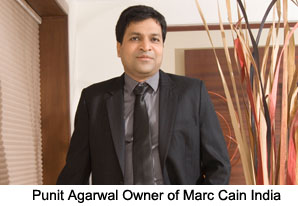 What drove you to foray into the Indian luxury market? Can you share some observations regarding the shopper and trends in this segment?
What drove you to foray into the Indian luxury market? Can you share some observations regarding the shopper and trends in this segment? The current global economic slowdown has hindered the growth of the luxury market globally; however India has hardly been affected. According to the recent ASSOCHAM-Yes Bank study, the luxury market in India is pegged to grow at 25% in 2013 till 2015 and likely to touch US$ 15 billion from the current level of US$ 8 billion. According to recent reports, India has one of the fastest-growing HNI segments in the world, currently contributing approximately 1.2% to the global HNI wealth. With increasing brand awareness and purchasing power, there is a great spending potential in the country. This consumer is wealthy, eager to spend and has the desire to indulge in luxury. This segment is in an emerging phase with a strong desire to connect to luxury. The upper class and upper middle class has moved on to luxury cars, bikes, exotic holidays and destination weddings. Luxury brands are widely preferred across categories like: Auto, Home Décor, Writing Instruments, Fashion, Accessories, and Cosmetics & Fragrances.
This is an exciting time to enter the Indian market. At present the global economy is fragile and growth is slow, however the Indian economic scenario is much better. According to IMF forecasts, the global GDP will grow at about 3.5% in 2013; whereas India's gross domestic product (GDP) is slated to grow at 6.1- 6.7 percent this year. The Indian market also holds a great potential since there is a huge gap between the Zara and Dior where Marc Cain can fit in and provide fashion to customers who are looking for fashion between the Promod and Gucci.
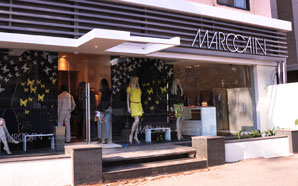 What kind of growth do you see in this segment?
What kind of growth do you see in this segment? Looking rich and good has always been an integral part of the Indian culture. The Indian luxury market is growing by leaps and bounds vis-a-vis what it was few years back. With consumers adopting to newer fashion styles and adopting international trends, there is immense potential for players to enter this space. The number of Ultra High Net worth Households, with a minimum net worth of INR 25 crore is expected to triple to 2.86 lakhs in next five years with a five-fold increase in their net worth to INR 235 trillion. And the HNIs will be double in number by 2015 to over 4 lakhs with a collective wealth of USD 2645 billion. This segment continues to spend on luxury collectibles and have carved a niche for itself. The rapid growth of the Indian middle class means that a larger number of consumers are able to afford luxury goods than ever before and the sheer number of people falling into this category continues to grow.
The economy in India has been consistent and growing. We are looking at a growing market and India holds huge potential. The customers have become more fashion conscious and aware. This poses a great opportunity for International brands to enter the country and create a market. We entered India in 2007 with the launch of two stores in Mumbai. We think there is a huge untapped market for luxury retail in India as consumers are more brand-conscious and are brand driven. They like to shop for products they aspire and the tag of owning or wearing a brand plays on the psyche of the consumer.
Could you tell us a bit about the Marc Cain brand?
Marc Cain is a German high end luxury brand for women's clothing. The collection consists of apparel, accessories and footwear ranging between INR 5000- INR 40,000. The doctrine of Marc Cain sets the highest standards for design, quality, materials, the latest production techniques and correct fit. The innovative spirit and distinctiveness of Marc Cain's product lines are based on the German production facility. There are two sub labels -Marc Cain Collections, and Marc Cain Sports. Marc Cain Collection. The company's key label combines sensuous silhouettes with cool, glamorous details - reflecting the spirit of the times with its own style and classiness. The Marc Cain Sports stands for casual and leisure wear: trendy, sporty, full of the joys of life. The label combines modern design with functionality and body consciousness.
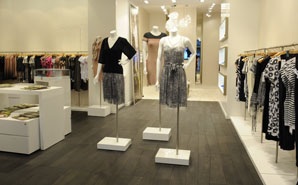 What is the typical profile of your shopper?
What is the typical profile of your shopper? The accelerating pace of economic and social change is transforming the Indian luxury landscape. The Indian shopper today is characterized by a distinct personality, a person who believes in looking beyond the ordinary and who has a high purchasing power. This category usually comprises of socialites, businessmen of large scale companies and people earning an income of more than 50lakhs p.a. Exposure to Western culture and lifestyle through internet and travels abroad have been establishing the Indian luxury consumer profile types, viz the category which believes in a badge value and show off to their peers and the other being the category which opts for mix and match of products. The consumer often spends on expensive holidays, artifacts, yatchs, watches, jewelery and so on which are high perception value.
With time the consumer tastes change and we are always on the move to provide the best. Our target consumer group has not changed; we change our collections in tune with the latest fashion trends and the Western world.
Any studies you have undertaken on your shopper behavior and mindset?
As Master Franchise India, we had to understand the potential of the market. We wanted the brand to grow and succeed in the market. We did study the needs, demands and aspirations of people falling under a higher income bracket. Since we had chartered a new territory, it became vital to understand the pulse of the consumer, what excites him, what motivates him/her to shop etc. Once we knew that there was a huge untapped market, that's when we decided to set foot in India.
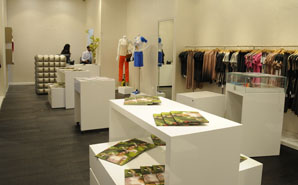 How challenging is it to undertake meaningful right shopper research?
How challenging is it to undertake meaningful right shopper research? Well, it is challenging to undertake right shopper research as with the changing times and easier options that are available to consumers, people have been spoilt for choices. People in India travel a lot and shop abroad and hence sometimes, the implementation becomes difficult in a completely new market. Also the tax is very high in India and this creates a hindrance.
As an international luxury brand, what are your expectations from the Indian market?
The Indian market poses immense potential since we are living in a buyer's market. The consumer is willing to spend for a better lifestyle and hence willing to spend more on the attire she wears. With increase in standard of living and customized product offerings, the country is turning into a place of great opportunity where brands are making tailor made products and solutions for end users.
The Indian fashion industry was at a nascent stage when Marc Cain set its foot in India in 2007. There was a huge gap between a high-end brand and a mass brand, therefore we saw the need to bridge the gap for the consumers and give them more options to satisfy their fashion appetite.
What are the typical challenges that you face as you establish your brand positioning in the Indian retail space?
It is an established fact that the consumer is the king today and the right product choice needs to be offered to the consumer and which is in sync with the latest international trends in the market.
What is your approach to finding the right skill set since manpower is usually a problem that most brands face especially in this segment?
We hold the Master Franchisee for Marc Cain in India thus the responsibility for making the brand a success (for the Master franchisee) is way higher than a franchisee alone. The investment, risk and responsibility for the franchisee are comparatively lower than the Master Franchisee. We believe that in order for the master franchisee to grow, one needs to pay attention to the fact that the franchisee yields profit. Apart from Indians being very entrepreneurial, franchising as a way of doing business has been well accepted in our country.
A lot of consideration is put in before getting the right representative on board. The person has to be committed to achieve the organization's goals, standards and expectations. He has to be well versed with the industry and the market dynamics to leverage any opportunities. The person hired on board needs to have the right skill sets in terms of the understanding of what works well in the particular markets, styles and patterns that sell the most, consumer profile of people entering the store. If one is dealing with an international brand, the company policies and do's and don't's need to be studies thoroughly.
What kind of skill sets do you look for? And what is your focus on training? What is the budget that you allot for training?
The person hired on board needs to have a fair bit of experience in retail and also should be from a fashion background or should have an inclination towards fashion merchandizing. The person needs to be well-groomed, presentable and well-spoken, which is a must while hiring. Germany conducts a training session for the employees across the globe twice in the year during Spring Summer and Autumn Winter where the employees are sent to the company headquarters for further training and development.
What are the retail formats that you are looking at in the Indian market? Any new plans here?
Currently, we have the Master Franchisee for India and are also looking at licensing, company-owned stores and the e-commerce platform in a big way in the near future.
And what is your focus on merchandising and in-store activations to connect with your target shopper?
In terms of our merchandize, we do not customize our products as the products are sourced directly from the parent company in Germany. The innovative spirit and distinctiveness of Marc Cain's product lines are based on the international fashion standards. There is a set standard in terms of the quality and design while sourcing from our parent company in Germany and we bear in mind to provide the same quality and design to all our shops and franchisees all over the World. However, we do keep in mind the latest fashion trends, the weather, location etc which suits the Indian market.
Celebrity visits and launching preview collections with Bollywood's tinsel town is a great way to attract the attention of the audiences. Celebrities are also used for an image makeover of the brand, to generate sales, to impart credibility and to generate positive word of mouth.
In store promotions definitely give a boost to the brand and help generate more sales. The use of images, graphics and display counters help generate better visibility for the brand and we often make use of this at Marc Cain. Besides this, the parent company has an active Twitter and Facebook page which helps people aware of the latest collection on Marc Cain and the new fashion trends in the industry.
What is the budget that you allot on retail level activations and merchandising?
The budget depends on the store area, and typically in a smaller store, more focus is given on the products and in a larger store area, visual merchandizing plays a far greater role.
Finally, what are your future plans for your Indian shoppers in this segment?
We plan to expand our footprint to other metro cities like Delhi, Hyderabad, Bangalore, Kolkata and Chennai. Our estimated investments for every store will be approx INR 3-4 crore, so we have set aside Rs 20 crore for the five stores. Having said that, we also plan to venture into the e-commerce platform when the time is right.
Box
Cracking the luxury market in India
Luxury seems one of the fastest growing segments in the country and shoppers' approach to premium brands at retail is different with the factors influencing their purchase being varied. So where is the luxury market in India headed? And, what does it take to woo the Luxury shopper? Let's hear it from the brands on their take on the luxury market and the shopper.
Aditya Sanghvi, Director, Audelade: "Now as Indians are traveling more, they are aware of the brands and know what they want."
Nidhi Aggarwal, Marketing Manager, Llardo: "Indian market has a lot of money and because of lack of availability of luxury products in the Indian market, Indians used to shop abroad. But, all this is changing now, thanks to the new policy of FDI which has resulted in international luxury brands making a beeline to the Indian market."
Anand Gupte, CEO and Creative Director, Anandg: "Personalized interaction with clients gives them assurance on customized solutions for their special days. Because we are branding ourselves as a courtier and wearable art we understand the shopper's personality and based on our interactions we weave our understanding into our garments. As for investing in establishing your brand, either you pay with money or you pay with time. The luxury market is very snobbish and it is very difficult to enter. Everyone wants to keep you out. So all this makes luxury market hard to crack."
Vinod Kaul, Executive Director, Rajasthan Fashion Week, "The investment required to establish a luxury brand would run in to Rs 30-40 crore easily, which is on the lower side and would involve more sustaining the brand."
Advertisement
Related Viewpoints
Advertisement

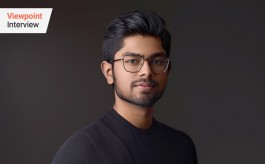
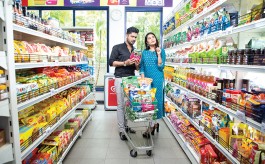






Comments